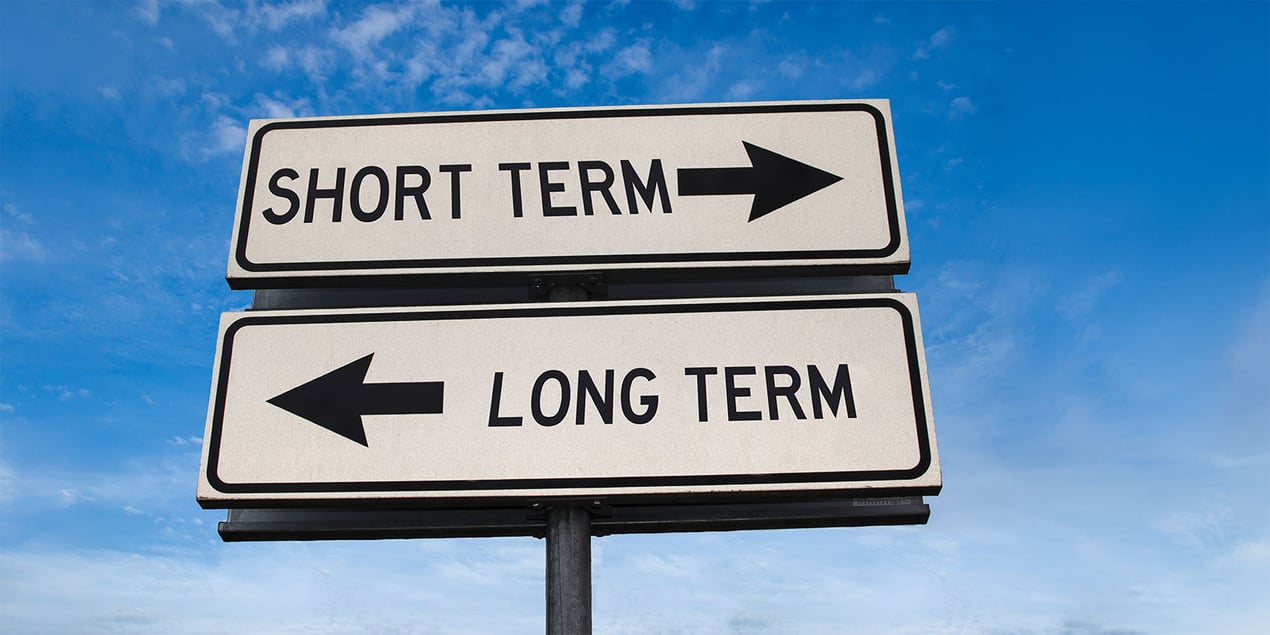Every business wants more leads. More pipeline. More sales.
So it’s no surprise that when people talk about “marketing that works,” they’re usually focused on what drives immediate results.
But after more than a decade in this industry—and some hard-earned lessons from building my own business—I can tell you this with confidence:
The marketing that truly drives revenue over the long term doesn’t come from chasing quick wins. It comes from mastering two distinct strategies, and knowing how to make them work together.
1. Short-Term Activation: Capture Demand When It Matters Most
This is the most obvious side of marketing. It’s where sales and marketing teams naturally align. It’s the part of the strategy that you can easily measure with dashboards, metrics, and spreadsheets.
Short-term activation is all about reaching people who are already close to buying. Maybe they’ve done their research, maybe they’re actively comparing vendors—but either way, the decision window is open. Your job as a marketer is to get in front of them at that moment and make the “yes” as easy as possible.
You do this through targeted campaigns, sharp offers, smart segmentation, and seamless user experiences. It’s the kind of marketing that gets immediate results and helps sales teams close deals. And yes, it’s critical.
But it’s also incomplete.
The uncomfortable truth is that most of your market isn’t in-market right now. Not even close.
They’re not looking for your product. They’re not reading your emails. They’re not even aware they’ll need what you sell six months from now.
And that’s where most companies fall short.
2. Long-Term Brand Building: Shape the Market Before They’re Ready
Brand is harder to quantify, and that makes it easy to ignore. But ignore it too long, and you’ll feel the consequences everywhere.
There was a time in our business when we leaned too far into the short-term. We doubled down on lead gen. We optimised for immediate results. We pulled back on the brand plays—the events, the visibility, the thought leadership. It felt like the right move at the time.
And for a while, it worked.
But then something shifted. We started losing deals—not because our product or pitch was off, but because we were invisible. Prospects didn’t know us. We weren’t in their heads. When the time came to choose a partner, they picked the name they remembered.
That’s the power of brand.
Brand marketing is about building memory structures. It’s about consistently showing up in the minds of your future buyers—before they’re actively looking. So when they finally do need what you offer, there’s no question who they’ll call.
It’s not fluff. It’s not “just awareness.” It’s long-term commercial strategy.
What the Best Marketers Actually Do
The best marketers I know—and the highest-performing teams I’ve worked with—don’t treat brand and activation as a binary choice. They don’t fall into the trap of thinking it’s either lead gen or long-term plays.
They do both.
They balance the urgency of today with the vision for tomorrow.
→ They run high-converting campaigns that hit revenue targets.
→ But they also show up consistently where their future buyers hang out.
→ They measure short-term performance, but they invest in long-term trust.
They don’t just market to sell. They market to stay relevant. To be remembered. To own a space in the buyer’s brain, even when the buyer isn’t buying.
Final Thoughts
If your growth has slowed down… if your lead quality is declining… if you feel like your sales team is working harder but getting less—don’t just look at your pipeline.
Look at your brand.
Ask yourself: Are we top of mind when the market is ready? Are we present in the conversations that matter? Are we building trust before the sale?
Because the truth is - leads come and go. Budgets shift. Algorithms change. But brand? Brand compounds.
The companies that win tomorrow are the ones who are remembered today.





